Have you ever had an experience of not being able to talk for some reason?
For instance, when you took your wisdom teeth out, broke your jaw, someone taking a mold of your face..and so on.
One of the biggest fights that I had with my sister started with when she couldn’t understand my murmurs when I took my wisdom teeth out.
So I decided to make a communicator.
Video demonstration: http://drive.google.com/file/d/1M4TKym7BnJNcziB2OL4j2dgWhBx9dFqx/view?usp=sharing
It comes with two parts: a Joystick and a button. The joystick is for a simple answer, and the button is for inquiries.
The joystick corresponds with one’s positivity in the answer in counterclockwise order, following down (no), right (maybe), up (yes), left (sounds great). The pitch of the sound corresponds as well, from a lower to higher pitch depending on the positivity in the answer.
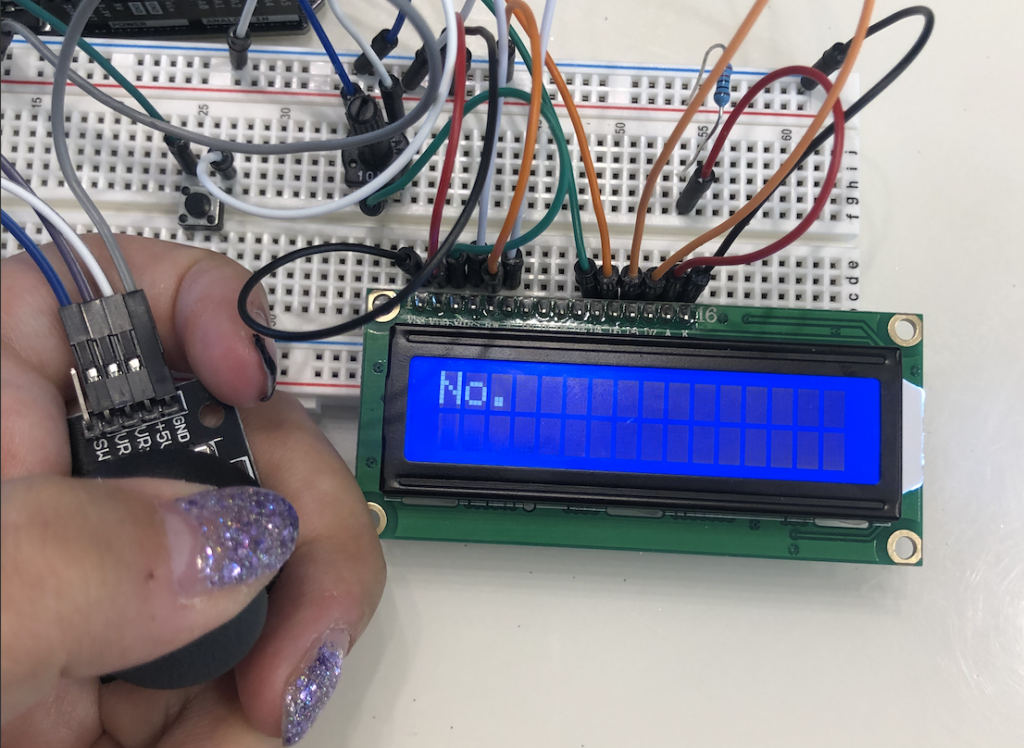
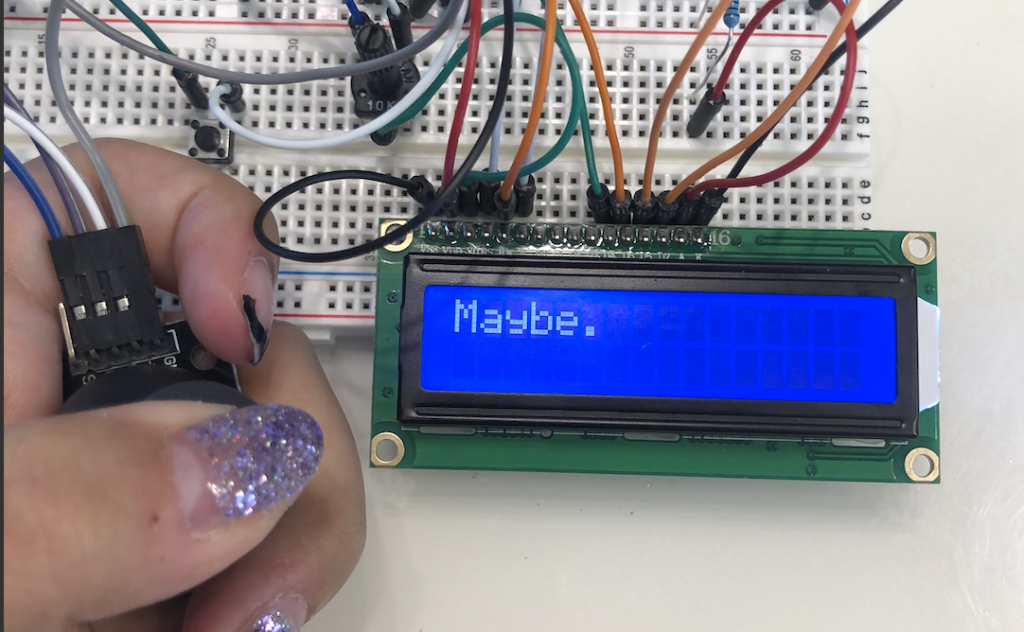

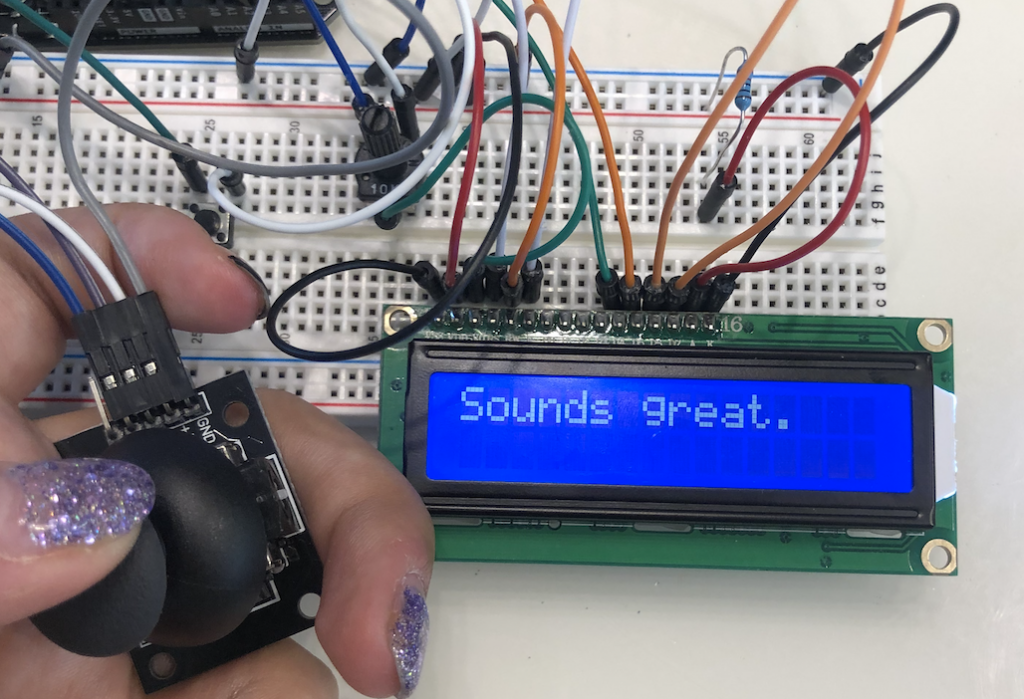
The button shows one’s inquiry in order. The user can change the message as well, but you can assign each note that corresponds with your inquiries.
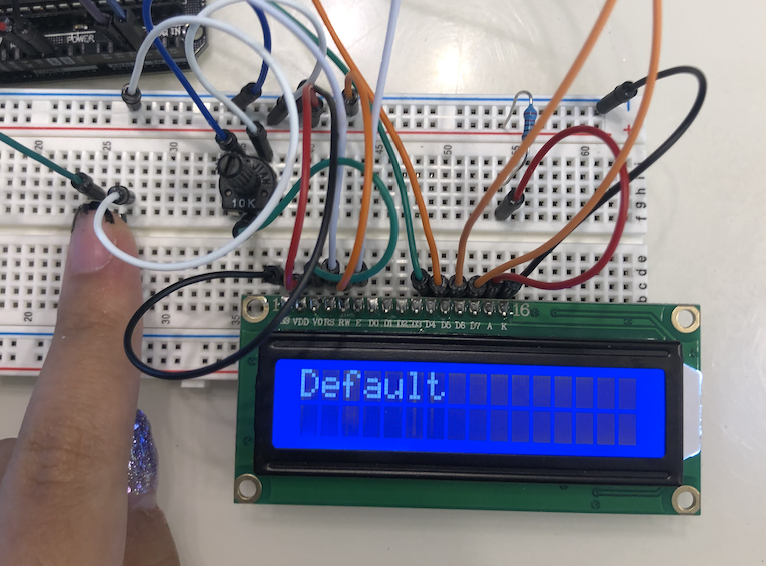
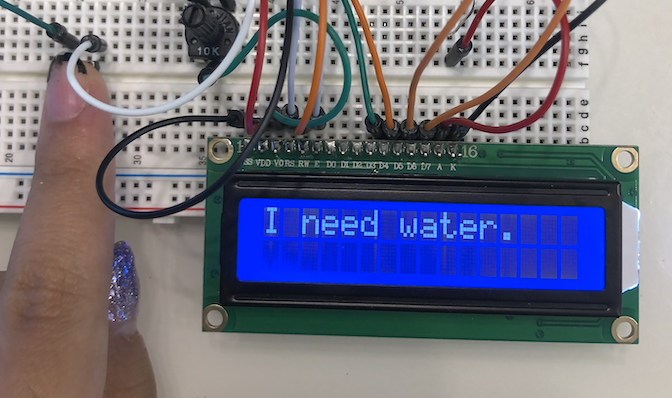
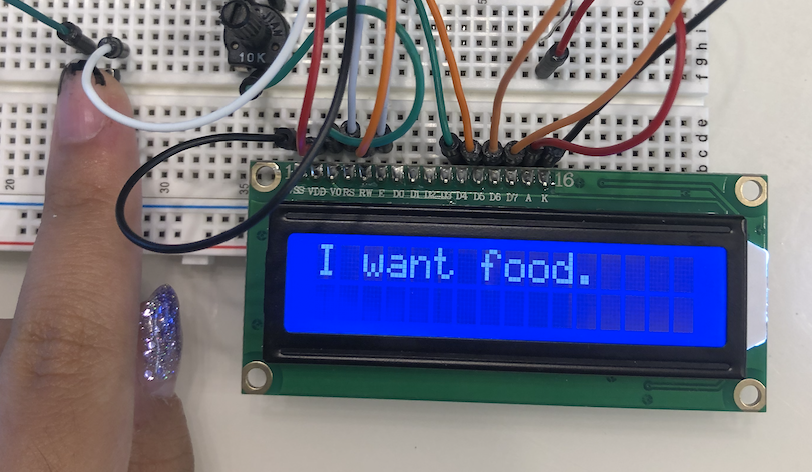
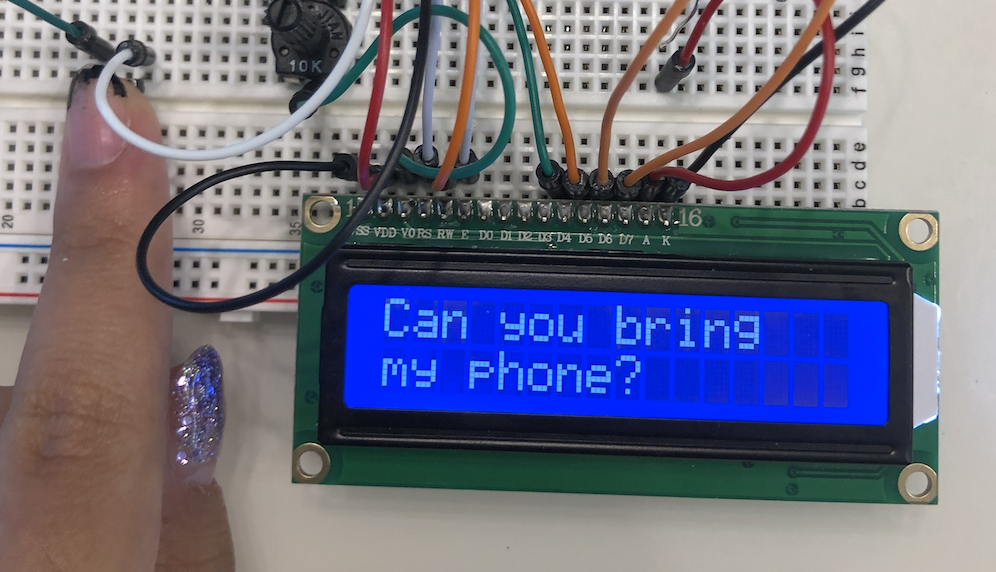
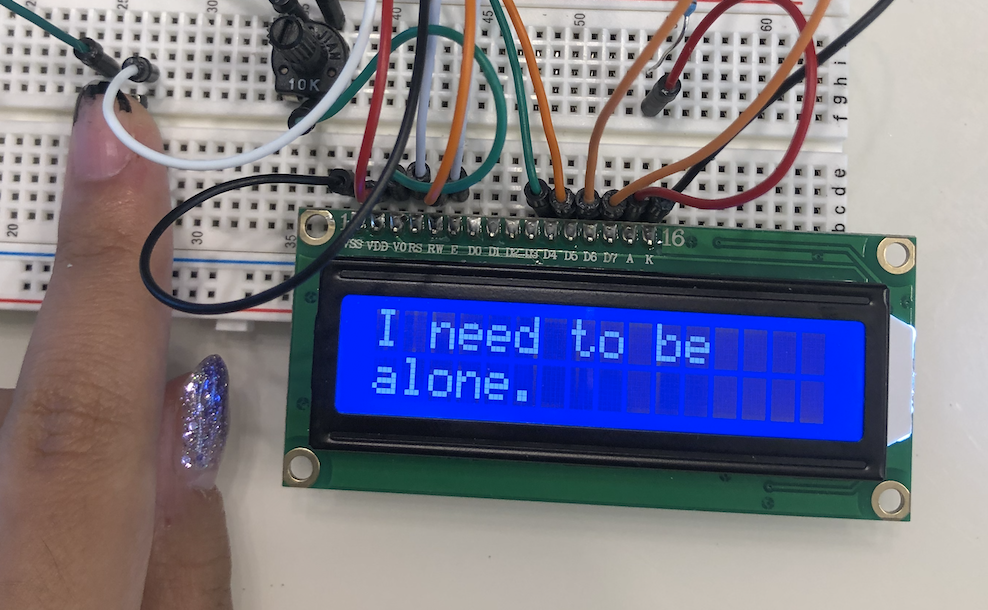
Q&A
What if I am not a perfect pitch?
- Does the pitch of notes corresponding with your answer help? Does LCD? Please let me know!
Schematics:
//Codes
#include <Wire.h>
#include <LiquidCrystal.h>
LiquidCrystal lcd(13, 12, 5, 4, 3, 2);
int speaker = 7;
const int button = 6;
int val;
int counter;
int pressed;
void setup() {
lcd.begin(16,2);
pinMode(speaker, OUTPUT);
pinMode(button, INPUT_PULLUP);
Serial.begin(9600);
lcd.print("Default");
}
void loop() {
val = digitalRead(button);
int sensorReading = analogRead(A2);
int sensorReading2 = analogRead(A3);
if (sensorReading < 300) {
lcd.setCursor(0,0);
lcd.print("Yes. ");
tone(speaker,659);
delay(500);
noTone(speaker);
}
if (sensorReading > 800) {
lcd.setCursor(0,0);
lcd.print("No. ");
tone(speaker,(523));
delay(500);
noTone(speaker);
}
if (sensorReading2 <300) {
lcd.setCursor(0,0);
lcd.print("Maybe. ");
tone(speaker, 587);
delay(500);
noTone(speaker);
}
if (sensorReading2 > 800) {
lcd.setCursor(0,0);
lcd.print("Sounds great. ");
tone(speaker, 698);
delay(500);
noTone(speaker);
}
if (val == LOW){
pressed=counter ++;
delay(250);
Serial.println(pressed);
if (pressed == 0){
lcd.setCursor(0,0);
lcd.print("I need water.");
tone(speaker, 784);
delay(500);
noTone(speaker);
}
if (pressed == 1){
lcd.setCursor(0,0);
lcd.print("I want food. ");
tone(speaker, 880);
delay(500);
noTone(speaker);
}
if (pressed == 2){
lcd.setCursor(0,0);
lcd.print("Can you bring");
lcd.setCursor(0,2);
lcd.print("my phone?");
tone(speaker, 988);
delay(500);
noTone(speaker);
}
if (pressed == 3){
lcd.setCursor(0,0);
lcd.print("I need to be ");
lcd.setCursor(0,2);
lcd.print("alone. ");
tone(speaker, 1046);
delay(500);
noTone(speaker);
}
}
}

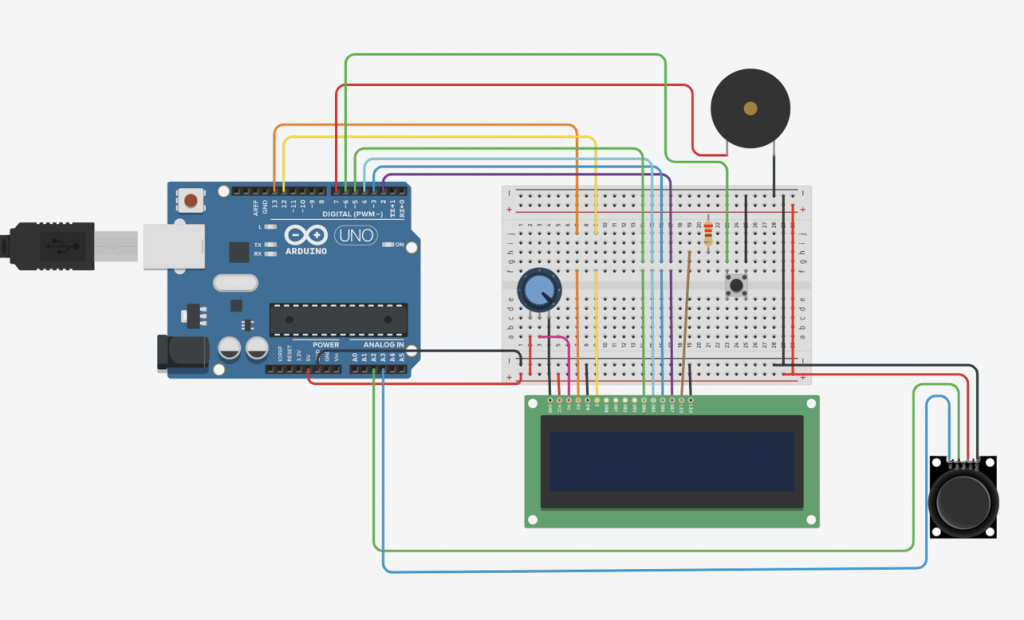
One note: in the music world we have a lot of debate about what “perfect pitch” means. Many of us believe it’s like being raised bilingual, you learn two different languages as you grow up instead of going to class to learn a second language. Rick Beato, a professional musician, has raised his kids to have perfect pitch. It’s almost creepy!
https://www.youtube.com/watch?v=vXivZlPu0ms